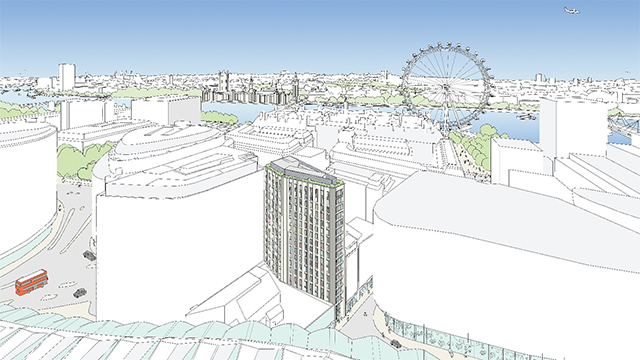Today, the Bank of England has raised interest rates to the highest level seen since 2009. What impact will this have on the property market?
Real estate may become less attractive against other asset classes in the event of an interest rate rise. However, it is forecast that it will not bring upon the onset of a collapse in values.
The 30th annual Financing Property presentation from Savills looks into the effects of an interest rate rise on the real estate market and the lending market behind it.
Savills said that, generally, the UK lending market was stable and not at risk of any major correction due to the diversity of lenders, low loan-to-value ratios (LTVs) and high interest cover ratios (ICRs).
Ian Malden, head of valuation, said: “Compared to a decade ago, on the whole the lending industry appears to be in a good place.
“Regulation, prudence and a healthy market have generated low LTVs and high ICRs and a diversified lending market has reduced the prospects of ‘contagion’.”
However, a rise in rates will make property and debt, already historically low yielding, less attractive to other asset classes, by cutting into margins and increasing those of other assets.
This could see lenders being more prudent about who they lend to.
In the last three months it has already become more expensive to borrow, as the three-month Libor and five-year Semi-Annual Interest Rate Swaps rose ahead of an expectation of a rates increase.
Interest rates are expected to rise around 2% over the next two years.
Nick Hume, director in the valuation team, said while there has historically been a lack of correlation between the base rate increasing and property yield rising [a sign of falling property values], “some borrowers will instinctively want to pay less for an assets to protect their return”.
Hume said an increase in base rates will have three particular outcomes for lenders:
- More caution regarding loan origination;
- Charging more for debt; and
- Being more discerning when choosing who to lend to.
While the diversity of lenders – and the rise and rise of alternative lenders – continues to act in favour of borrowers, Savills cautioned that 73% of all outstanding debt is due for repayment in the next five years, with loan maturities set to peak in 2020.
This could cause some borrowers to seek alternative sources of finance if values soften in the interim. With yields already low, this would make replicating existing levels of leverage challenging to sustain ICRs.
This, it said, could lead to lower LTVs, which in turn could prompt some stress at the point of refinancing.
According to CASS, new origination levels were broadly stable in 2017 at £44.5bn, with 51% of origination refinancing and 49% new acquisitions, indicating lenders are replacing their maturing loans with new lending but not expanding significantly.
Savills main conclusions for lenders were:
■ Regulation, prudence and a healthy property market have generated low LTVs and high ICRs, which equals stability;
■ If gradual, a rising cost of money should not cause undue worry to the lending industry;
■ If values do decline it will create pockets of stress, particularly when refinancing;
■ At this point in the extended cycle, there is more risk going up the LTV curve;
■ The lending industry should not be complacent and should seek advice to capture changes in the market place; and
■ Borrowers are more at risk and the financially weaker owners will experience more difficulties.
In the residential market there could be a more immediate effect due to impact of interest rate increases on mortgage payments, and thus personal wealth.
A 200bps rise would increase the amount being repaid annually by more than £20bn.
However, so far, changes in interest rates have had little impact on mortgage rates.
Lucian Cook, head of UK residential research at Savills, said: “The application of stress tests since 2014 mean the vast majority of existing mortgage holders should be able to absorb a moderate rise in rates.
“However, stress tests for new buyers are likely to act as a drag on house price growth as rates rise, particularly in London.”
This article was previously published on 6 June 2018
To send feedback, e-mail alex.peace@egi.co.uk or tweet @egalexpeace or @estatesgazette










